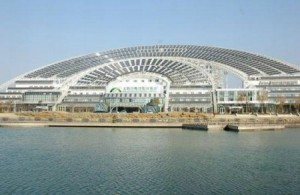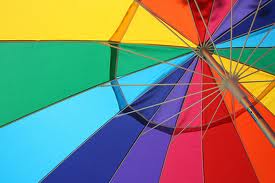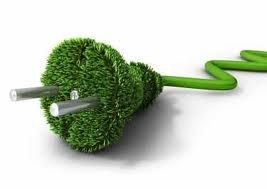Gentiana Spahiu
(You can find the word format of the lab with all the graphs at: solar-lab)
Being that we have spent so much time in class talking about energy, its use and its necessity as well as the different forms of how the energy could be captured and used to our benefit at the lowest cost, Solar Cell Lab would be a great demonstration of such opportunities. Solar energy is classified as a renewable source and a potential candidate to substitute the current expensive (long term and with regards to global warming) use of fossil fuels.
Facts on Solar Energy:
 + Solar energy is the heat and the light that derives from the sun.
+ Solar energy is the heat and the light that derives from the sun.
+1990- A world record was set when a solar powered aircraft flew 4060km across US, using no fuel.
+It can be used to: heat up or cool down a house, create electricity, power cars, cook, communicate, and much more.
+Solar energy could be captured and stored in batteries, reflected, insulated, absorbed and transmitted. *
+It takes about 8 minutes for the sun light to reach earth- therefore when we see the sun set- the sun had been gone for 8 minutes.
+ Solar energy is at no cost to us.
+ All television and communication satellites are powered by solar panels.
+ Currently- turning the solar energy into electrical energy is quite costly.
Back to the classroom setting
To conduct the experiment we were provided with a solar cell, one voltage probe, a light source (flashlight), colored film filters, and a ruler. It is important to emphasize that our lab-marathons have always run on NXT robots and the LabView application, which also are present in this experiment.
The objective of this experiment is to familiarize us with the relationship between the light intensity, its wavelengths, and the voltage output of the solar cell.
Experimenting…
There are two parts of this experiment. First we measure the voltage output of the solar cell under different wavelengths. Second we observe the correlation between the light intensity (through colored filters) and the voltage output.
Part 1:
We connected the solar cell with the NXT adapter and the voltage probe and ran the LabView application. The data retrieved was recorded in an Excel spreadsheet. We call the first run the Baseline. We then placed the solar cell on the table, placed the flashlight (turned on) on top of it and ran the program again to retrieve data for the No Distance test.
|
DISTANCE |
VOLTAGE |
|
0 |
9.4032994 |
|
5 |
0.613124667 |
|
10 |
0.570785667 |
Afterward we decided to look at the voltage output of the solar panel with two different distances (measured with the ruler) from the light source, one at 5 inches and the next at 10 inches.
All the data was recorded into the Excel sheet. The table and the graph demonstrate the findings:
Part 2:
 With the solar cell on the table and a constant distance of 5 inches we ran the test 3 more times, each time using a different color filter- respectively yellow, blue, and red. We then gathered the recorded data from the spreadsheet and build a table and a graph to demonstrate how the voltage output is affected by the light intensity. Here are the findings:
With the solar cell on the table and a constant distance of 5 inches we ran the test 3 more times, each time using a different color filter- respectively yellow, blue, and red. We then gathered the recorded data from the spreadsheet and build a table and a graph to demonstrate how the voltage output is affected by the light intensity. Here are the findings:
***The data in the table is the average of 30 points measured in two minutes.
|
BLUE |
YELLOW |
RED |
|
0.59801 |
0.61268 |
0.625948 |
Conclusions:
As expected on part one the highest voltage output happen when there was no distance between the solar cell and the source of light. In addition, from the second part we found out that the color red was a stronger receptor transmitter of light because of the highest voltage output. On the other hand, the color blue test resulted in the lowest output. In regards to the wavelengths of the colors, red has the longest, followed by yellow and lastly the shortest is the blue color. Interestingly the voltage output followed the same pattern, thus we can safely assume that the longer the wavelength of colors (brighter colors) the higher the voltage output of the solar cell.
The above picture represents the largest solar-powered building in the world- China, 2009



